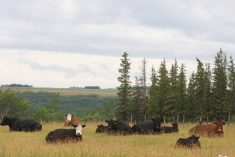It’s been said that anyone who thinks about economic forecasts for more than about a half an hour a year is wasting their life.
A professional economist told me that, and what she was getting at is the intractable nature of economics. Even the experts can’t agree on what’s happening, or has happened, never mind what will. The best forecasts are at best informed opinion.
Yet despite this, I will confess to having an outsized interest in the field. If money makes the world go around, I have a fascination with the machinery of that system. Somehow over the years I have developed opinions on esoteric topics like monetary policy, interest rates and the role of central banks in the economy.
Read Also

Roundup retraction makes public trust ripples
A foundational study on glyphosate safety was recently retracted, while Roundup maker Bayer has already said it may ditch the key agricultural herbicide after lawsuits piled up.
To put it bluntly, 17-year-old me would probably be mocking me mercilessly as a nerd if time travel were a reality.
But you can’t deny who you’ve become and I read the recent report from Farm Credit Canada on the economic standing and balance sheets of Canadian farms with great interest.
FCC’s chief economist J.P. Gervais has, over the years, become one of the information sources I regularly follow. I might not always agree with him, but he provides the information and sound analysis that gives a good starting point for understanding the issues.
I think he’s dead right in his recent assessment that the lower Canadian dollar has protected you from the worst impacts of the commodity meltdown. It has essentially lost 25 per cent of its value since 2012, the last time it was at or near parity with the U.S. greenback.
Because U.S. dollars are the de facto global currency, when Minneapolis hard red spring wheat futures were at US$9.34 a bushel in 2012, that’s what Prairie farmers received too minus shipping and handling.
As I write this, the MGEX hard red spring index was just a few fractions of a penny over $3 a bushel. But thanks to the declining loonie, your price back on the farm was more like $3.75 a bushel. It’s not great, but it’s pretty clear that represents a better return to your farm than if you were just south of the line in North Dakota.
Of course, prices are still a third of what they were four years ago and it doesn’t negate the fact that many of your inputs are purchased in U.S. dollars. But overall, the low loonie works in your favour.
Because we have a relatively stable and diversified economy, the currency fall, mainly fuelled by a precipitous drop in oil prices, has been relatively modest. If you want to see what a heaping helping of political instability can do to that picture, you only need look south to Brazil.
Back in 2012, the Brazilian real was worth roughly half the value of a U.S. dollar, making US$9.34 corn worth about 18.7 reals. Today the real is worth roughly a quarter the value of a U.S. dollar, making US$3 wheat worth 12 reals. It hasn’t quite completely removed the effect of falling grain prices, but it has eliminated about half the price loss when Brazilian growers get paid back at the fazenda (farm) gate.
Market analyst Pedro Dejnaka, managing partner of AGR Brazil, a consultancy specializing in agriculture commodity markets, sounded the alarm late last fall in Winnipeg at the annual Cereals North America conference.
There he detailed the reality that many of the farmers he worked with in that nation actually had healthier margins than they did during the boom times because their costs had also fallen along with grain prices. In some cases he said growers had reported their margins were over 100 per cent.
“That means Brazilian farmers are earning just as much today, in Brazilian reals, as they were when soybeans were at $17 a bushel,” he said at the meeting.
That translates into a reluctance to take their foot off the gas, he said, adding he suspected other quickly growing grain export economies, such as the Russian Black Sea region, were experiencing a similar currency effect.
I have no crystal ball, and I suggest you take everything I and other professional and amateur prognosticators have to say with a dose of skepticism, but it’s fair to say we’re in murky waters.
As production continues to grow in other areas and farmers experiencing tighter times begin to pursue the age-old strategy of producing their way through low prices, a dangerous dynamic could be coming down the pike.
Given enough time lower grain prices can translate into lower rental rates, farmland values and a general malaise in agriculture.
What goes up can come down, as we saw with farmland in the 1980s and more recently with U.S. housing prices. If farm assets begin to fall in value again in the future we could see some hard times.
A currency cushion can soften the impact but it won’t break the fall entirely.















